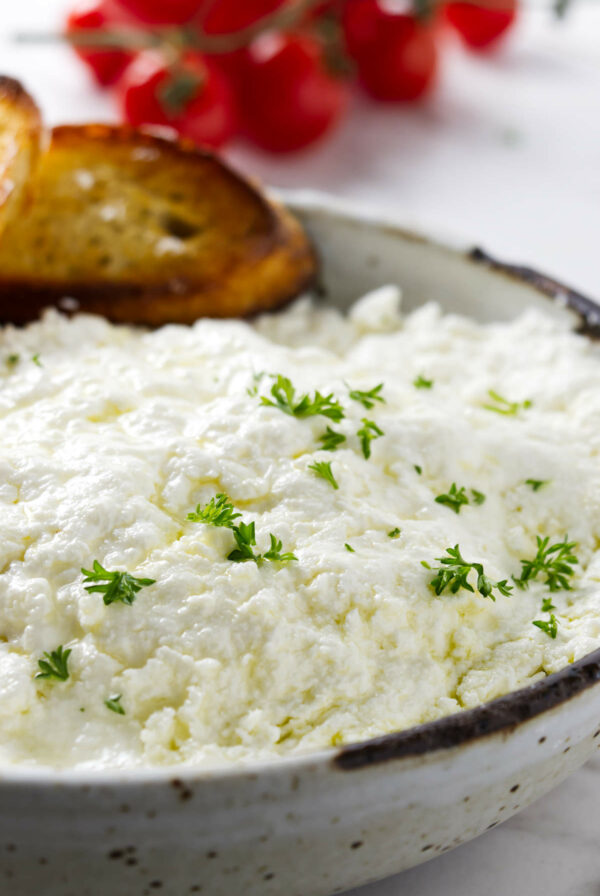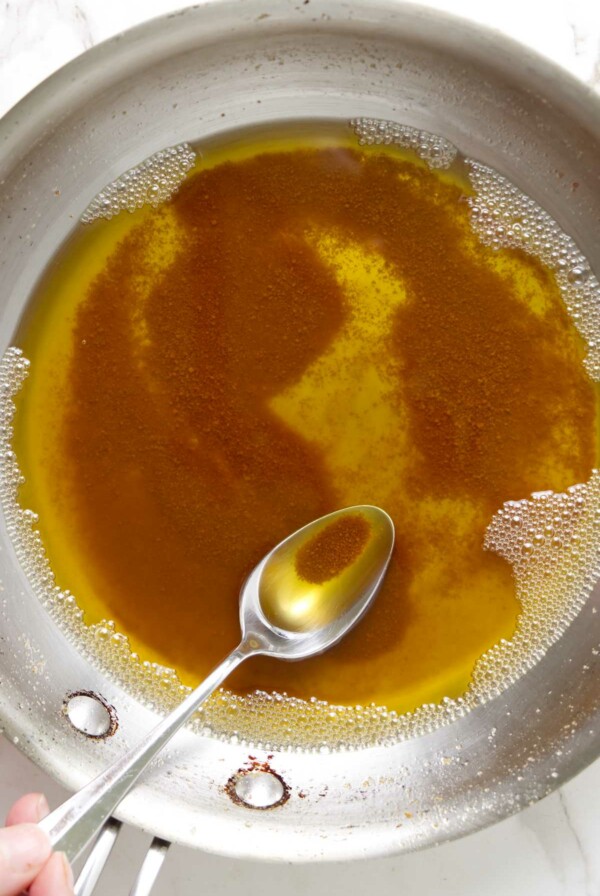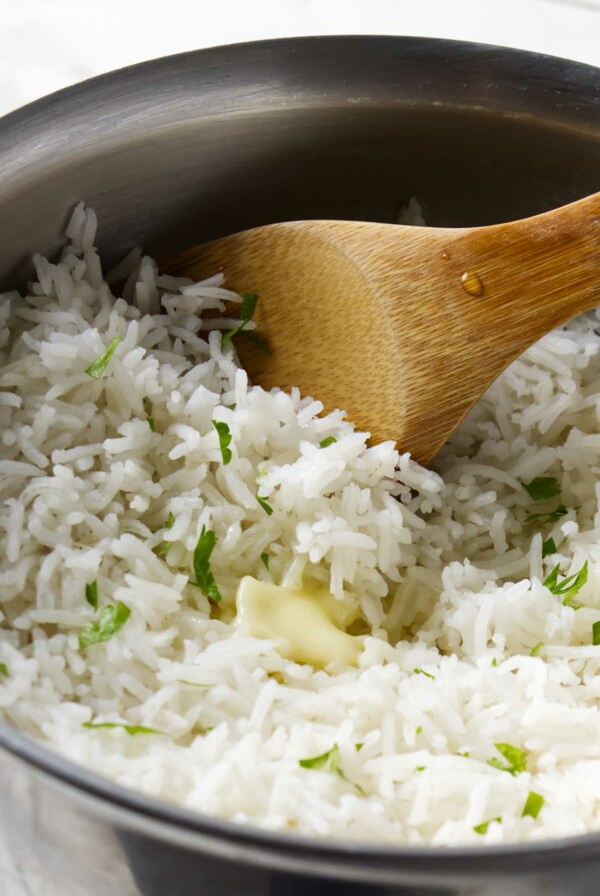This post may contain affiliate links. Please read our disclosure policy. As an Amazon Associate, I earn from qualifying purchases.
Making pizza at home isn’t just about tossing ingredients onto dough and hoping for the best. The way you layer your pizza affects everything—how evenly it bakes, whether the crust stays crispy, and how well the flavors come together.
So, does cheese go under or over the toppings? Should you spread sauce thick or thin? And how do you prevent a soggy crust? Let’s break it down with a step-by-step guide to layering your pizza the right way.
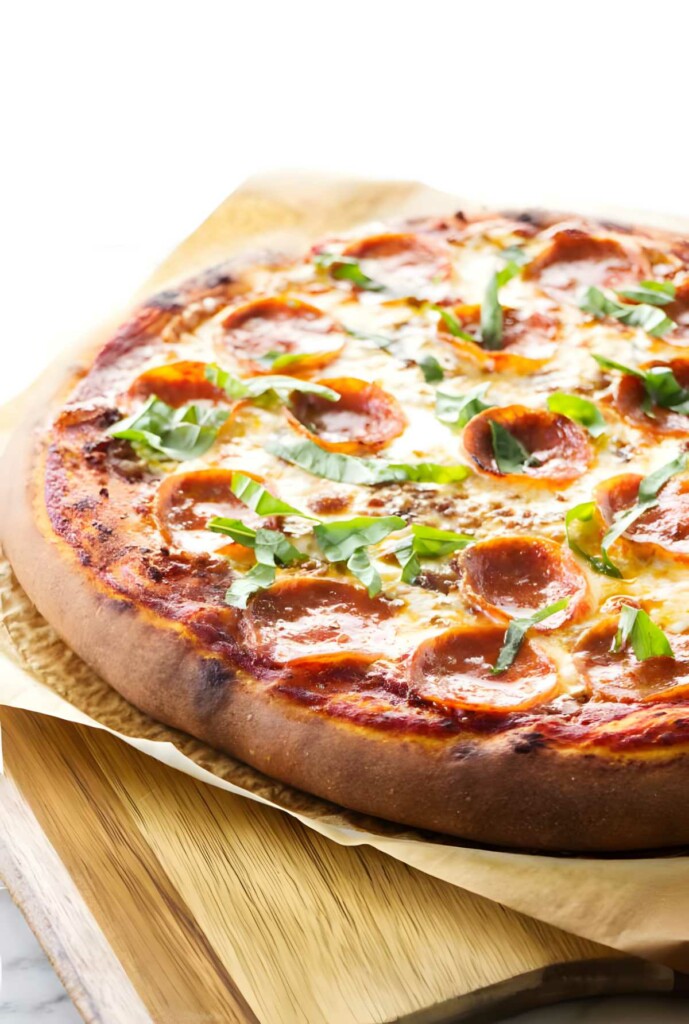
The Correct Order for Layering a Pizza
The classic pizza layering order looks like this:
- Dough – The foundation of your pizza (thin crust, thick crust, or pan-style)
- Sauce – A thin layer of thick sauce to avoid sogginess
- Cheese – Low-moisture mozzarella for even melt and less water content
- Toppings – Precooked meats, fresh or sautéed veggies
- Finishing Touches (Optional) – Herbs, drizzles, or a dusting of parmesan
However, some regional pizza styles break these rules (more on that below).
Step 1: Start with a Great Crust
Your crust is the foundation, so if you’re making pizza from scratch, start with a reliable homemade pizza dough.
- For crispy thin crust: Roll the dough thinner and use high heat (500°F or more).
- For thick and chewy crust: Let it rise longer and bake at a slightly lower temp.
- For deep dish: You’ll actually layer cheese first, then toppings, then sauce. This is because deep-dish pizza needs to bake longer, and putting the cheese under the sauce prevents it from burning.
I’ve been making homemade pizza for over 35 years and I love testing recipes. You can see some results where I tested the difference between pizza flour vs bread flour and ap flour.
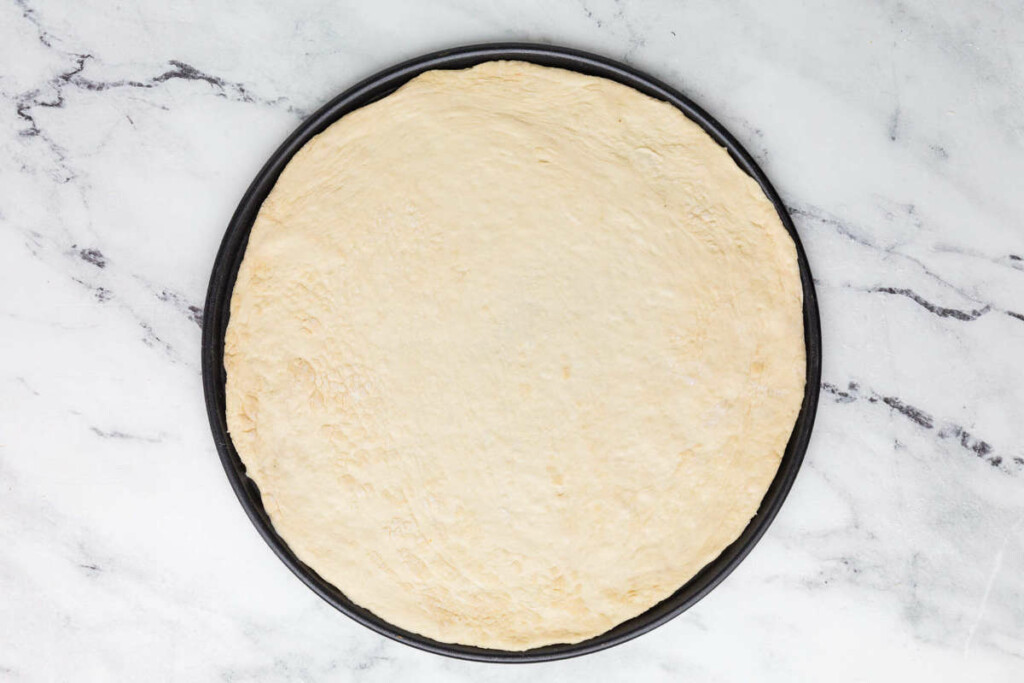
Step 2: Spread the Sauce Correctly
How much sauce is too much? The answer depends on your crust:
- Thin Crust – Use about ¼ cup of sauce, spread in a thin, even layer
- Thick Crust – Can handle ⅓ to ½ cup of sauce
- Deep Dish – Gets a thicker layer of sauce on top of the cheese
Tip
Use the back of a spoon or ladle to spread the sauce in circular motions, leaving a ½-inch border around the edges to prevent overflow.
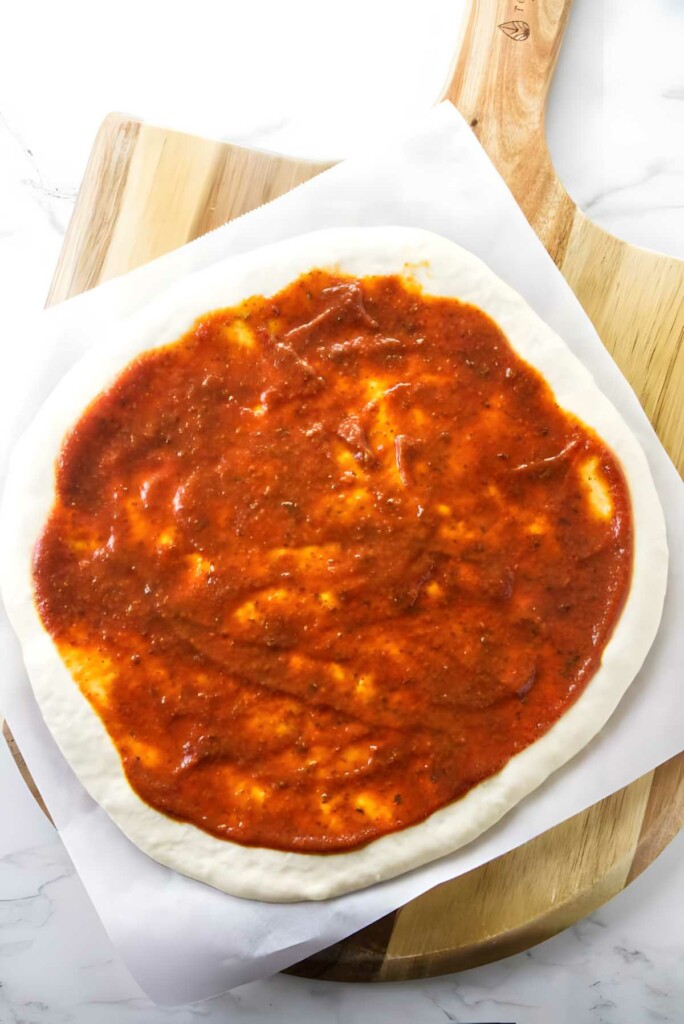
Step 3: Cheese Goes on Before the Toppings (Most of the Time)
The best cheese for pizza is low-moisture mozzarella because it melts evenly without making the pizza watery.
- Use low-moisture mozzarella (shredded or sliced)
- If using fresh mozzarella, blot it dry and let it sit out for 30 minutes before using
- Distribute cheese evenly, too much in the center makes it greasy
Exceptions: Detroit-style and Chicago deep-dish pizza layer cheese before the sauce to create a caramelized crust.
Tip
Grate mozzarella straight from the block and freeze it for 20 minutes before shredding. This prevents it from getting gummy and clumping together.
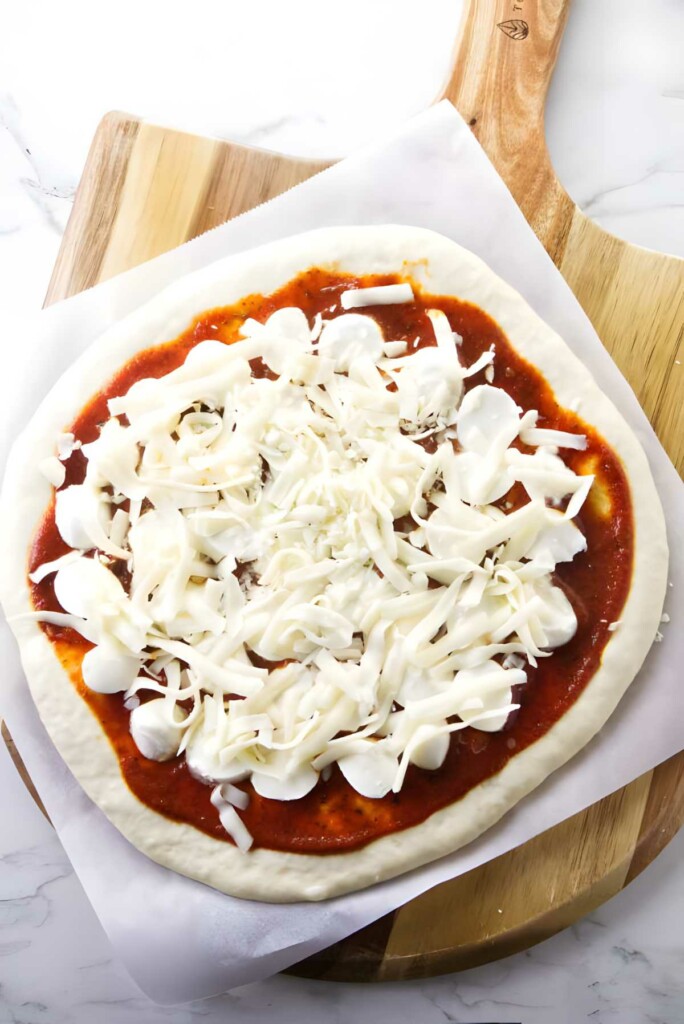
Step 4: Add Toppings (Precook Meats, Handle Veggies Right)
Your final layer is your toppings, but not all toppings should go on the same way.
- Meats: Always precook raw meats like sausage, bacon, and ground beef. The pizza doesn’t bake long enough to cook them fully.
- Vegetables: High-water veggies (mushrooms, spinach, peppers) should be sautéed or roasted first to prevent a soggy pizza.
- Fresh greens & herbs: Basil, arugula, or spinach should go on after baking to avoid wilting.
Should cheese go on top of toppings?
For classic pizza, cheese goes under to hold toppings in place. If you want a crispy, bubbly topping (like pizzeria-style pepperoni cups), you can sprinkle a small amount of cheese on top before baking.
Tip
If your toppings aren’t browning enough, turn on the broiler for the last 1-2 minutes of baking. Just watch closely to avoid burning!
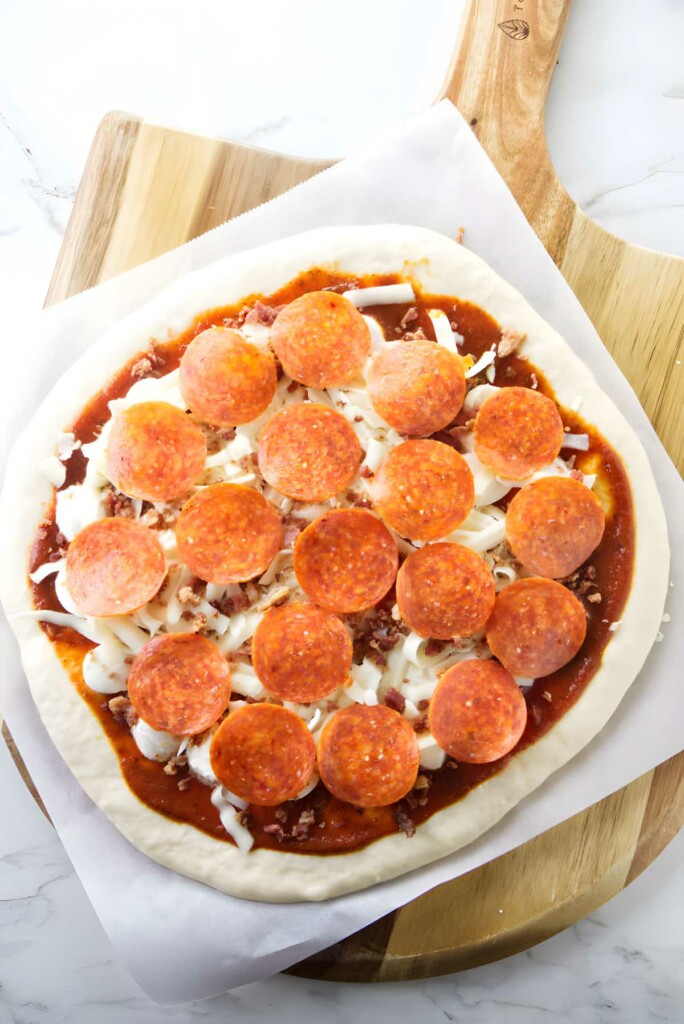
Bonus: Finishing Touches for the Best Flavor
Once your pizza is baked, a few simple add-ons can take it to the next level:
- A drizzle of olive oil or hot honey
- A sprinkle of grated parmesan or pecorino
- Fresh basil or arugula (after baking)
- If you add pizza seasoning, add it before or after it bakes.
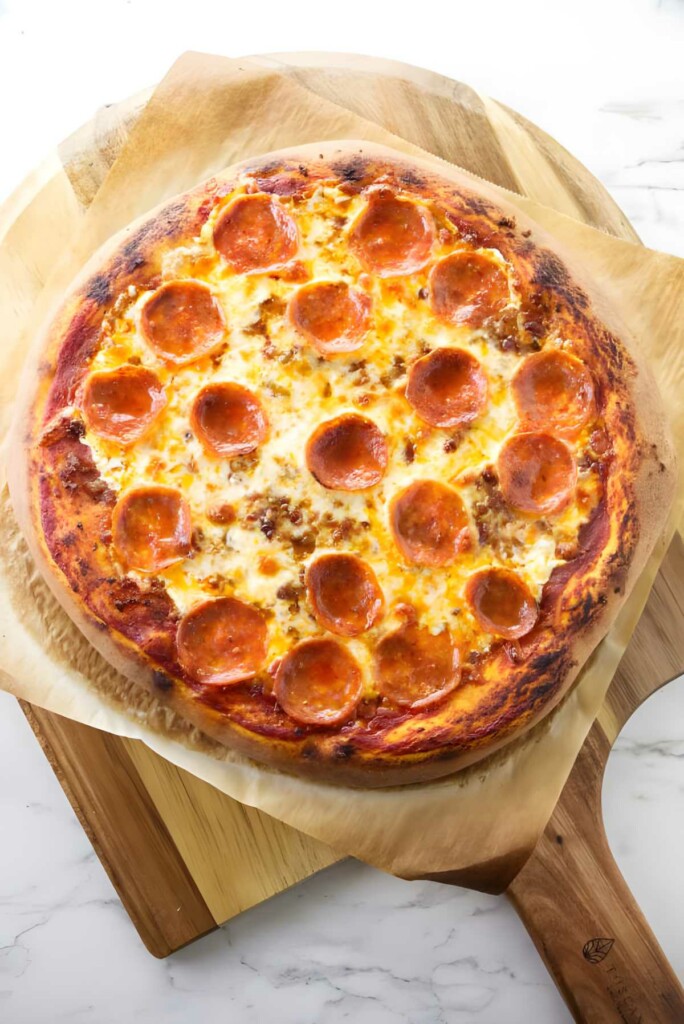
Get the Perfect Pizza Every Time
When layering a pizza, the key is balance. Too much sauce? Soggy crust. Too much cheese? Greasy pizza. Follow this classic layering order, and you’ll get a perfect homemade pizza every time.


